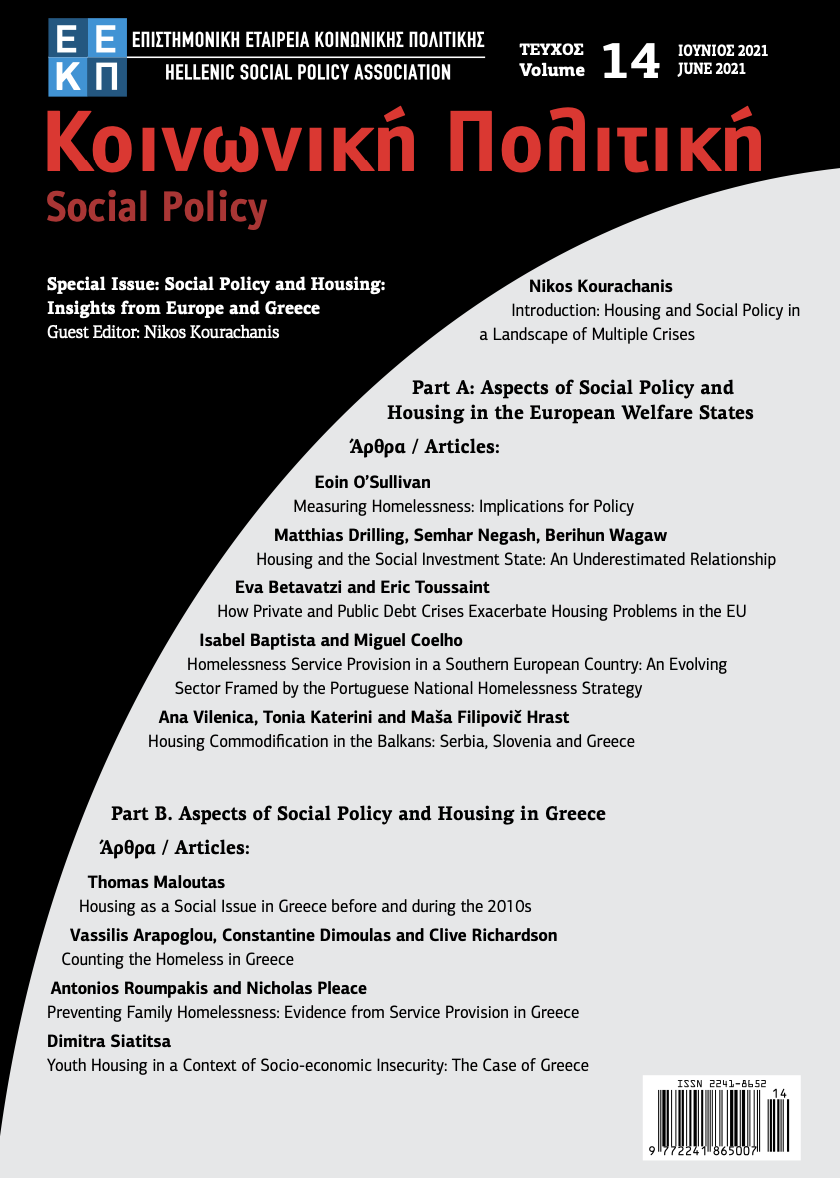Counting the Homeless in Greece
Περίληψη
We present the main findings from pilot research on the homeless population in six municipal areas in Greece in 2018. The project employed the “point-in–time” technique, combining counting by observation with interviewing where possible. The procedure succeeded in engaging local communities and NGOs in enumerating the homeless population. A large part of the housing needs of the homeless remains unmet, especially in the major metropolitan centres, despite increased provision of emergency shelters and services since 2012. Younger ages face alarming difficulty in accessing housing support. Financial hardship and unemployment contribute separately and interactively with other stressors to increased homelessness.
Λεπτομέρειες άρθρου
- Πώς να δημιουργήσετε Αναφορές
-
Arapoglou, V., Dimoulas, C., & Richardson, C. (2021). Counting the Homeless in Greece. Κοινωνική Πολιτική, 14, 115–127. https://doi.org/10.12681/sp.29081
- Τεύχος
- Τόμ. 14 (2021)
- Ενότητα
- Άρθρα

Αυτή η εργασία είναι αδειοδοτημένη υπό το CC Αναφορά Δημιουργού 4.0.
Οι συγγραφείς των άρθρων που δημοσιεύονται στο περιοδικό διατηρούν τα δικαιώματα πνευματικής ιδιοκτησίας επί των άρθρων τους, δίνοντας στο περιοδικό το δικαίωμα της πρώτης δημοσίευσης. Άρθρα που δημοσιεύονται στο περιοδικό διατίθενται με άδεια Creative Commons 4.0 και σύμφωνα με την άδεια μπορούν να χρησιμοποιούνται ελεύθερα, με αναφορά στο/στη συγγραφέα και στην πρώτη δημοσίευση για μη κερδοσκοπικούς σκοπούς και με δικαίωμα τροποποίησης μόνον με παρόμοια διανομή (αν αναμείξετε, τροποποιήσετε, ή δημιουργήσετε πάνω στο υλικό, πρέπει να διανείμετε τις δικές σας συνεισφορές υπό την ίδια άδεια όπως και το πρωτότυπο).



